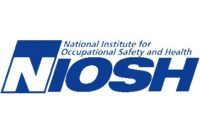 Employees who use nanomaterials in research or production processes may be exposed to nanoparticles through inhalation, dermal contact, or ingestion, depending upon how employees use and handle them. Although the potential health effects of such exposure are not fully understood at this time, scientific studies indicate that at least some of these materials are biologically active, may readily penetrate intact human skin, and have produced toxicologic reactions in the lungs of exposed experimental animals.
Employees who use nanomaterials in research or production processes may be exposed to nanoparticles through inhalation, dermal contact, or ingestion, depending upon how employees use and handle them. Although the potential health effects of such exposure are not fully understood at this time, scientific studies indicate that at least some of these materials are biologically active, may readily penetrate intact human skin, and have produced toxicologic reactions in the lungs of exposed experimental animals.
Current research indicates that the toxicity of engineered nanoparticles will depend on the physical and chemical properties of the particle. Engineered nanomaterials may have unique chemical and physical properties that differ substantially from those of the same material in bulk or macro-scale form. Properties that may be important in understanding the toxic effects of nanomaterials include particle size and size distribution, agglomeration state, shape, crystal structure, chemical composition, surface area, surface chemistry, surface charge, and porosity.
The resources below contain information on the potential health effects of exposure to nanomaterials and workplace exposure control methods. As part of a government-wide coordination effort, OSHA is working with other federal agencies to address issues related to the impact of nanomaterials on human health and the environment.
Health Effects
Nanotechnology at the National Institute for Occupational Safety and Health (NIOSH). NIOSH is the leading federal agency providing guidance and conducting research on the occupational safety and health implications and applications of nanotechnology.
Nanotechnology and the Environment. The Project on Emerging Nanotechnologies, established by the Woodrow Wilson International Center for Scholars, contains several presentations on the implications and impacts of nanotechnology on the environment and health, and on regulatory issues and potential regulatory approaches. The webpage includes presentations by representatives of governmental agencies, academia, and industry.
Safety of Manufactured Nanomaterials, Organisation for Economic Co-operation and Development (OECD). This webpage focuses on the implications of the use of nanomaterials for human health and environment safety, focusing on testing and assessment methods.
The International Council on Nanotechnology (ICON). Provides an online "virtual journal" linking to abstracts and some articles on recent scientific findings related to the environmental health and safety benefits and risks of nanomaterials.
Nanotoxicology: An Emerging Discipline Evolving from Studies of Ultrafine Particles, Oberdörster et al. (2005). 2.27 MB PDF, 17 pages.
Pulmonary Toxicity of Single-Walled Nanotubes in Mice, EPA. (2003, September 15), 1.7 MB PDF, 24 pages. Presentation of research findings. Single Walled Nano-Tubes (SWNT) are structurally rolled-up graphite sheet ~1.5 nm diameter and several microns long. Includes air sampling.
Workplace Assessments and Controls
Approaches to Safe Nanotechnology, NIOSH. First published in 2005, this draft 2006 update, which is available for public comment, provides an overview of what is currently known about engineered nanomaterial hazards and measures that can be taken to minimize workplace exposures, including occupational health surveillance, exposure assessment, and exposure control procedures such as engineering controls and personal protective equipment (e.g., respirators, protective clothing).
GoodNanoGuide. An Internet-based collaboration platform designed to enhance the ability of experts to exchange ideas on how best to handle nanomaterials in an occupational setting. It is meant to be an interactive forum that fills the need for up-to-date information about current good workplace practices, highlighting new practices as they develop.
Interim Guidance for Medical Screening of Workers Potentially Exposed to Engineered Nanoparticles, NIOSH. (2007). Interim guidance concerning the medical screening of workers potentially exposed to engineered nanoparticles in the manufacture and industrial use of nanomaterials. Because the topic has not been extensively discussed in the scientific literature, NIOSH has developed this guidance to generate discussion, fill the current knowledge gap, and provide interim recommendations until further scientific information becomes available. Additionally, NIOSH is seeking comments on the strengths and weaknesses of exposure registries for workers potentially exposed to engineered nanoparticles.
Approach to Nanomaterials ES&H, Department of Energy Nanoscale Science Research Centers. (2007), 196 KB PDF, 25 pages. The document sets forth practices for managing environmental, safety and health (ES&H) concerns, including developing site-specific controls, at Nanoscale Science Research Centers.
Nanotechnology White Paper, Environmental Protection Agency (EPA). EPA 100/B-07/001, 2007, 4.12 MB PDF, 136 pages. The document, the purpose of which is to provide information on key science issues and needs associated with nanotechnology, also provides an overview of existing information on risk assessment as well as human exposures and their measurement and control.
American Industrial Hygiene Association (AIHA): Information on the host of monitoring and protective strategies already in place and what might be in store for the future of industrial hygiene and nanotechnology.
Environmental Defense and DuPont Corporation, Nano Risk Framework (July 2007). This document describes a process for the responsible development of nanomaterials throughout their lifecycle (from production to disposal). This includes recommended principles and measures to follow to control exposure in occupational settings.
Nanoparticles: An Occupational Hygiene Review, Health and Safety Executive (HSE), United Kingdom. (2004), 760 KB PDF, 113 pages. This research report focuses on processes for the development and manufacture of nanoparticle products. It provides an overview of nanotechnology, including physical characteristics, exposure locations, and recommended controls.
Nanotechnology: United Kingdom Information Note, HSE. (2004), Note No HSIN1, 20.8 KB PDF, 4 pages. This document provides information on health and safety issues surrounding some aspects of nanotechnology.
Guidance for handling and use of nanomaterials in the workplace. (Status 28.03.2007), 147 KB PDF, 14 pages. German Chemical Industry Association (VCI) and German Federal Institute for Occupational Safety and Health (BAuA).
Nanosciences and Nanotechnologies: An action for Europe 2005-2009. First Implementation Report 2005-2007. 161 KB PDF, 13 pages. This document from the European Commission summarizes the activities and progress on nanotechnology in Europe during 2005-2007, including developing and/or revising standards in relation to health, safety and environmental protection, and an examination of monitoring technologies as well as workplace and environmental safety for nanomaterials.
International Council on Nanotechnology (ICON), Review of Current Practices in Nanotechnology. Phase One Report: Current Knowledge and Practices Regarding Environmental Health and Safety in the Nanotechnology Workplace, 427 KB PDF, 31 pages, and Phase Two Report: Survey of Current Practices in the Nanotechnology Workplace, 2.20 MB PDF, 136 pages. The first report compiles and summarizes global efforts to document current practices and to establish risk assessment frameworks. The reviewed efforts are critically evaluated for their approaches, completeness and foci. The second report presents the findings of an international survey of current environmental health and safety and product stewardship practices in the global nanotechnology industry.
ORC Worldwide. Nanotechnology Consensus Workplace Safety Guidelines. The webpage contains a selection of peer-reviewed health, safety and environment tools and reference materials that may be useful to practitioners involved in deployment of nanotechnology.
International Center for Technology Development, Principles for the Oversight of Nanotechnologies and Nanomaterials. 118 KB PDF, 15 pages. This document declares principles that the authors believe must provide the foundation for adequate and effective oversight and assessment of nanotechnology.







